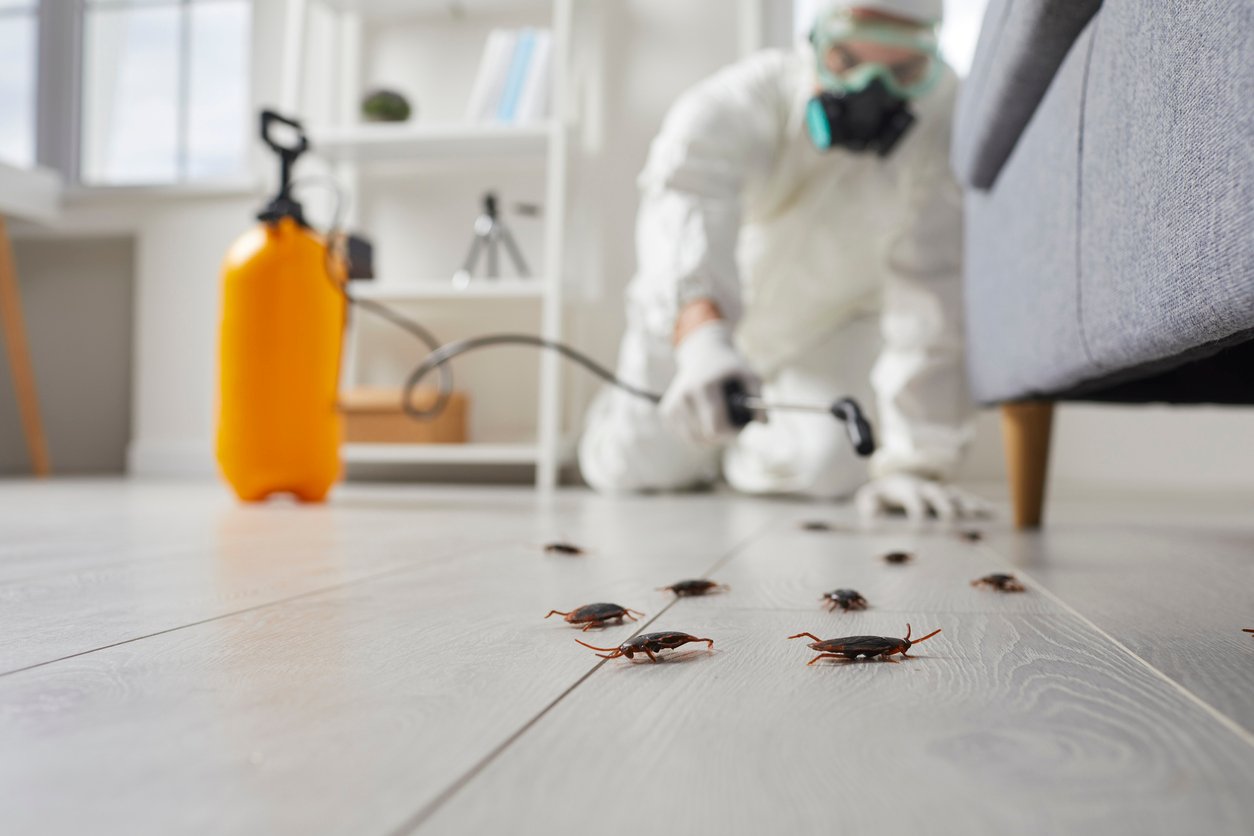What Are Spider Crickets?

Spider crickets (family Rhaphidophoridae) are also known as camel crickets. There are around 150 species that call North America home. At just around an inch in length (not including their legs), these pests are small but mighty, giving a “pop” sound when they jump around.
These pests sometimes make their way into people’s homes, surprising them with their massive leaps and jumps when spooked. While these pests won’t necessarily harm you, they can cause damage in your home and are worth taking the time to get rid of.

Why are they called Spider Crickets?
Spider crickets get their name because of their long legs that resemble an average wolf spider. Some of their other nicknames include:
- Sprikets
- Camel crickets
- Camelback crickets
- Cave crickets
- Criders
These crickets normally live outside, but they’re also found in moist, cool buildings, like greenhouses or sheds. They often live in drainage pipes or wells, and they can also make their home in air conditioning units. It’s not uncommon to find them in homes that have moisture issues in some areas, like in crawl spaces or basements.
Since they’re nocturnal and share spaces where you might also find spiders, it’s not surprising that they’re compared to them.

What do Spider Crickets look like?
Spider crickets have a unique appearance. They are similar to wolf spiders in size, getting between ½–1 ½ inches long. If you can get close, you’ll notice that spider crickets have two long antennae that are at least as long as their body. They also have yellow-brownish markings that stand out more than an average wolf spider. There is some amount of color variation between species, so it’s not uncommon for spider crickets to be light brown, dark brown, or spotted.
If you can approach the cricket without it jumping away, you’ll see that it actually has only six legs. Two hind legs are extremely long—those are the legs built for jumping long distances. The other four legs are in front and are there for gripping and balance.
The body shape of the spider cricket also gives away that it isn’t a spider. It’s humpback-shaped, and the body is quite chubby in relation to the fullness of the legs.

Where do Spider Crickets live?
Spider crickets live all over the United States, but they usually live outside in caves or forests. Some people have never seen these unusual pests at all because they usually hide away under rotten logs or leaves.
They’re considered “accidental invaders,” which means they may not want to be in your home at all. However, they will gather in damp places, so if your crawl space, garage, basement, shed, or other parts of your home are damp or decaying, you could find yourself with a congregation of crickets bouncing around. They can cause significant damage when they’re present in large numbers, so while one or two might just need to be shooed out of the area, larger groups need to be addressed more directly.
To keep them out of your home, consider cutting down tall grasses and keeping wood piles or debris at least 20 feet away from your home. Eliminate moist or decaying areas from your yard and inside your home. Rotate items in storage areas regularly to create a less-hospitable space for these insects to hide—clutter creates conducive conditions for many pests, not just spider crickets.

What do Spider Crickets eat?
Spider crickets are omnivores (insects that can survive from eating both plant and animal matter). Both nymphs and adults feed on other insects, arthropods, and organic debris. They also eat wood, cardboard, fungi, and carpet. In some cases, they’ll eat other spider crickets.
Since spider crickets can eat debris, you’ll want to make sure they’re not chomping away on your belongings. If they’re in your home in large numbers, you could end up facing damage to carpets and fabrics.

Do Spider Crickets bite humans?
Spider crickets are the kings and queens of the jump scare. To intimidate predators, they’ll jump toward anything that approaches them—even you. So, if you approach, expect the spider cricket to jump at you if startled.
Even if it rams into you and gives a good scare, a spider cricket won’t bite you since it doesn’t have fangs (though it could use its mandibles to chew on you if it thought you might be food).
What Kind of Damage Could a Spider Cricket Do?
| Not all species of spider crickets are the same. There are some species that can cause damage around your home. They might eat through organic curtains, carpeting, or cotton clothing, for example. While largely considered to be a nuisance species, if you start to see damage and growing numbers of camel crickets inside, it’s time to call in the professionals. |

Why are Spider Crickets in my house?
Spider crickets, as nuisance pests, don’t normally set out to end up inside someone’s home. However, they will make your house their home if they can find the moist, damp, dark areas they like to live in.
Think about your home environment. Do you have a problem with moisture in a bathroom or drainage system? Do you have a crawl space that is warm, damp, and dark? Do you have wood chips in your garden that surround your home? Are there spaces where there are “cave-like” structures that provide cover, such as piles of rocks?
Getting rid of an infestation is advisable, so start by addressing their hiding places. If their numbers continue to grow, our experts can come to your home and help.
Dealing with Spider Crickets? We can help!
We know that dealing with jumping pests can be frightening and frustrating. These pests can damage your belongings, and we’re here to help no matter the size of the infestation. Contact us at Moxie Pest Control, and we’ll get you a free quote and the help you need to get rid of spider crickets in your home.



